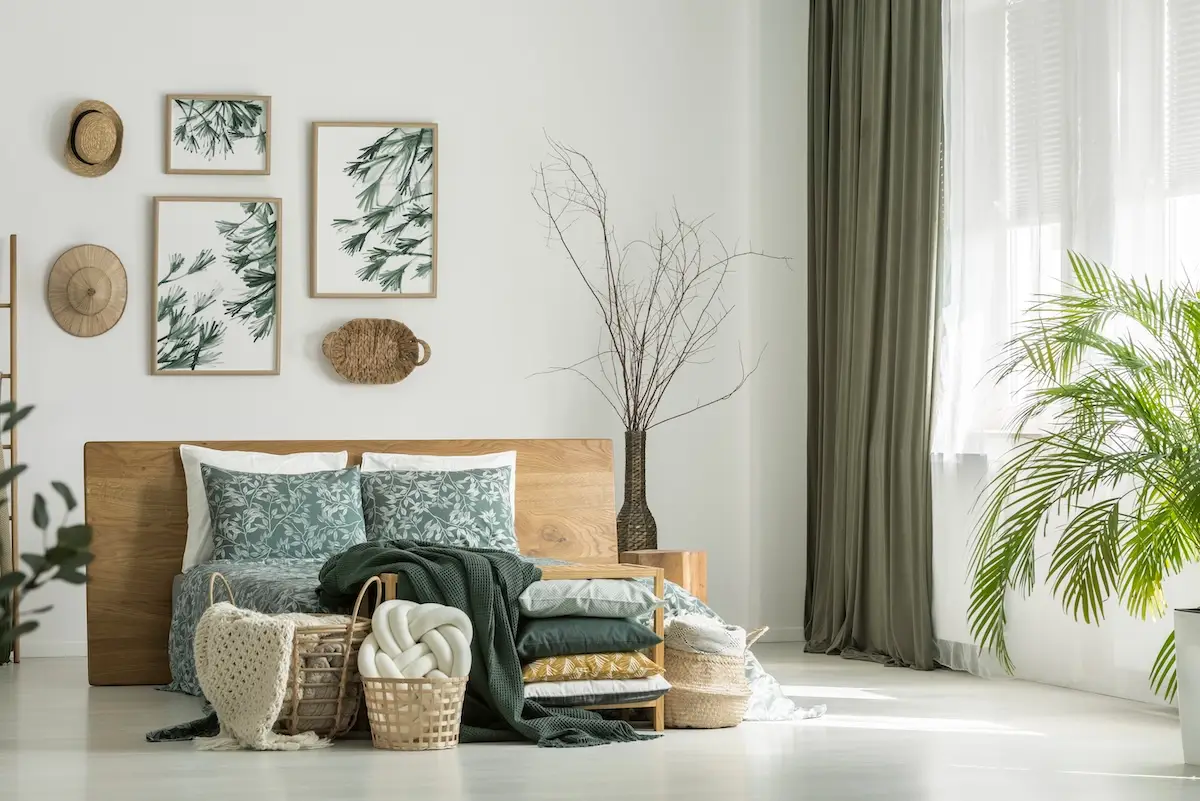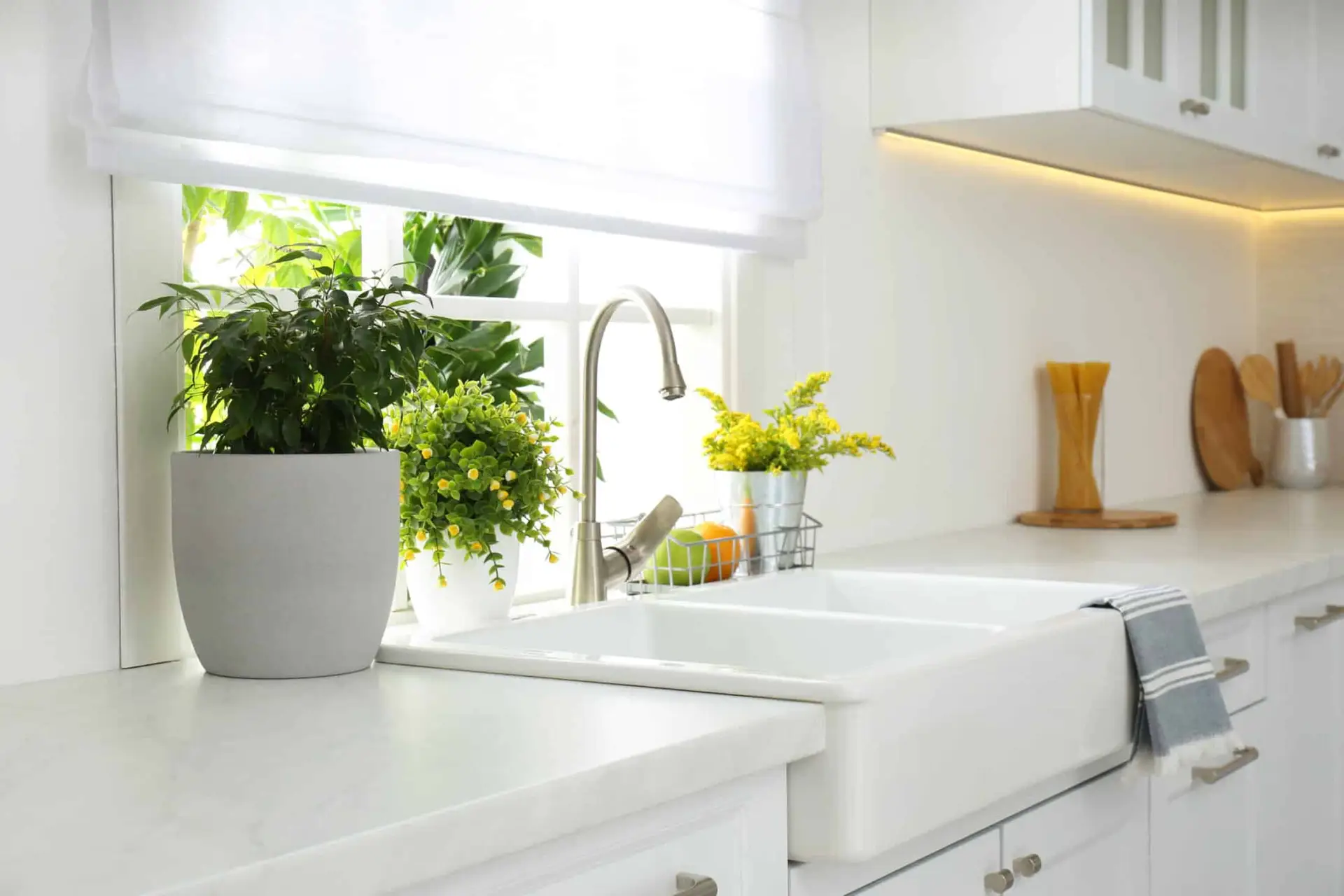One powerful way to add depth and richness to a home is to celebrate a room’s architectural history. At the same time, you may not want to go all-in with your home’s original design. Perhaps you aren’t a lover of all aspects of traditional design or you or your partner love more modern styling. The good news is you can capture a room’s history without overdoing it. Neoclassical design blends traditional and modern styling while keeping elegance at the forefront – and your living room is an ideal place for it! Here are ways you can incorporate neoclassical style in your living room.
What is Neoclassical Design?
As the name suggests, the style joins classical design with newer sensibilities. It celebrates the room’s original design treatments, such as columns and fireplace hearths. Still, it leaves other areas more subdued so the space can incorporate different styles. For example, painting wainscoting in white or another solid color instead of wood stain creates a cleaner canvas for modern styling.
Sometimes too much of one design can feel superficial, like gilding the lily or putting on heirs. Alternatively, moderation can add a level of taste and sophistication. This understanding drew people away from Rococo design to neoclassical design in the 18th and 19th centuries.
Even today, neoclassical design uses subtlety to achieve balance and calmness without doing away with the finer elements – and in some ways, it adds to the beauty of the items. Like the “less is more” philosophy, it accentuates specific design elements, such as columns and fireplace hearths, to help them stand out on a “white canvas” to attract more appreciation for their design. They stand out like works of art.
Ways to Incorporate Neoclassical Design in Your Living Room
Since neoclassical style balances ornamentation, it works perfectly in rooms with built-in embellishments, like your living room.
Here are ways to incorporate neoclassical style in your living room:
Beauty in Moderation
In some ways, Neoclassical design follows the idea of “less is more”. Selecting items that offer the most style and diluting others helps minimize the busy aspects of classical rooms. You can do this by accentuating critical elements like a fireplace hearth, a classically designed mirror, decorative pottery, flowers, urns, and minimal art. Minimization is key.
Use Furniture and Decorations That Feel Timeless
Decorate sparingly. Choose accessories, accents, and furniture that picks up on some classical elements, but for others, lean toward simple lines and shapes for subtlety. Try rounded, linear, and slim designs that are lower to the ground for a less cluttered look than traditional furniture. This is why modern furniture is a hit in neoclassical designs.
More Symmetry and Geometry in Your Layout
Place more emphasis on horizontal and vertical lines and symmetrical layouts. Position sofas facing each other and identically-styled chairs at either one 90-degree angle from a couch or angle or facing it head-on. Adopt mirrored configurations, such as a chair on either side of a console.
High Ceilings
The higher the ceiling, the better. Neoclassical rooms are meant to feel grand. Height and visual tricks like vertical lines are effective ways to evoke grandeur.
Large Windows and Mirrors
Like ceilings, high windows and mirrors help make the entire room feel expansive and impressive. Feel free to go big!
Spacious Layouts
Another way neoclassical design conveys grandeur and luxury is with open space. A room without clutter feels larger, which translates into a feeling of wealth. At the same time, items in the room stand out as important works of art.
Fewer Colors
Many designs feature one wall color, such as neutral white, beige, or ivory. Still, you can opt for more robust colors if they complement a home’s original classical styling. Examples of classical colors are gray, blue, green, and even black. Apply the paint to a single wall or the entire room.
Window Dressings
This design touch improves the living room’s look while accentuating its height. Drapes also come in styles that complement a more modern room. Clean, linear drapes in heavy fabrics extending from floor to ceiling are typical in modern and neoclassical spaces.
Wood Floors and Rugs for Softness
Maintaining a room’s original wood flooring helps celebrate the room’s history. Still, like wainscoting, it can pull away from neoclassical styling if the color or contrast is too intense. Soft and light stains help maintain a more neutral look. Soft rugs also add visual and physical warmth.
Clean, Elegant Fabrics
Some common choices are velvet, linen, and damask silk, each in soft tones to complement surrounding walls. If using patterns, opt for subtle designs that directly match other patterns in the room to minimize clutter.
We’re Here to Help
Neoclassical design is a beautiful way to join your home’s unique history with the comfort and beauty of today’s styles, and the right balance is key to its success. We often work with neoclassical design and are happy to show you how to adopt this style effectively in your home. Contacts us here to learn more!




